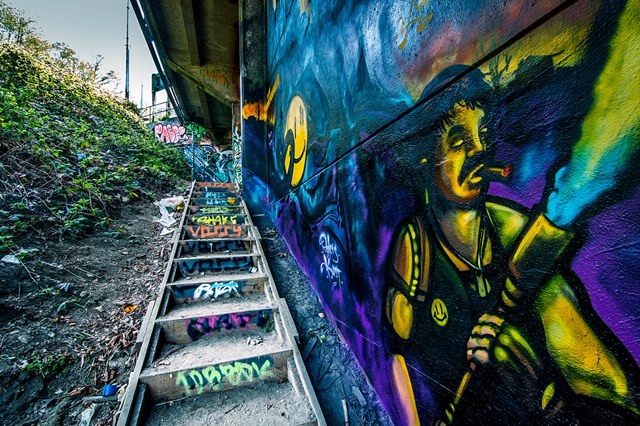8. Sociological Theories of Crime
8.3 Strain Theory
Dr. Sean Ashley
The main question that preoccupied early criminology in North America was, “Why do young, working class men engage in crime?” For the Chicago School, the answer was largely an ecological one. Writing in 1938, Robert Merton offered another explanation, one based more on the social structural approach pioneered by Durkheim.
It was the concept of anomie that interested Merton the most. For Merton, anomie is a condition whereby society exerts pressure on the individual to achieve culturally defined goals but does not provide the institutional means to achieve them or devalues the institutional rules in favour of achieving the goals (Merton, 1938). His macro-level theory has come to be known as strain theory, because the strain people feel to achieve the culturally defined goals (i.e., wealth and prestige) leads them to engage in innovative (i.e., criminal) activities to achieve their goals.
Within the context of American capitalism, the primary cultural goal is money, yet the institutional means to achieve that goal is not available to everyone. Despite the American dream that everyone can become rich, the United States has relatively low levels of social mobility. For Merton, this explains the “higher association between poverty and crime” (Merton, 1938, p. 681). It is not that poverty leads to crime, but that American culture sets up the goal of wealth as the objective to achieve regardless of the means. This goal permeates all aspects of life, from business and education to organised crime and sports competitions.
Take for example the doping scandal that hit the world of competitive biking in 2012. After winning the Tour de France seven years in a row, Lance Armstrong was found to have been taking performance-enhancing drugs. Not only did he admit to taking these drugs, but he also said that this was simply part of how things were done in the cycling world and that they were as common as water bottles and tire pumps. The scandal illustrates how cultural goals (winning) exist in tension with institutional rules. When a competitor begins to perceive the rules as an impediment to achieving their goal, widespread anomie can set in, which leads them to circumvent the regulations in their attempt to win (Merton, 1938, p. 676).
Merton lays out five “adaptations” or “modes of adjustment” that people use to relate culturally defined goals with legitimate means. These adaptations include conformity, innovation, ritualism, retreatism, and rebellion. Innovation is the adaptation that best explains most crime and was the primary focus of Merton’s work. Most people living in a society accept the culturally prescribed goals and pursue them following the rules laid down by the society. Some people, though, innovate by taking a shortcut to the goal, bypassing the rules.
Ritualism, on the other hand, is a condition in which the rules are followed at the expense of goals, where there “develops a tradition-bound, sacred society characterized by neophobia” (Merton, 1938, p. 673). Retreatism involves rejecting both the means and the goals, a condition that characterises serious drug addiction and living on the streets (Merton, 1938), while rebellion overturns the goals and means society has to offer, creating new goals and institutional regulations.
| Cultural Goals | Norms/Rules | |
| Conformity | ||
|---|---|---|
| Innovation | ||
| Ritualism | ||
| Retreatism | ||
| Rebellion | overturned | overturned |
Merton’s model is specific to North America, but as capitalism has spread around the globe, the goal of acquiring wealth has also spread, leading to a globalisation of anomie and, correspondingly, certain forms of criminal behaviour. “The-end-justifies-the-means” has become the guiding norm, which is really a case of normlessness or anomie. For Messner and Rosenfeld (1997), this represents a state of institutional anomie, a condition that correlates with higher homicide rates cross-nationally.
Strain theory is useful for explaining particular types of crime, especially the ability to make money through illicit means. It is less useful, however, for explaining crime that is non-utilitarian, such as breaking windows, spray painting walls with graffiti, and shoplifting small items that are readily discarded after the act (Cohen, 1955). Another critique of Merton’s theory pertains to crimes committed by bankers and executives. People who engage in corporate crime often have access to the institutional means, and many hold degrees from highly respectable universities. In response, Murphy and Robinson (2008) propose an additional mode of adaptation to anomie and strain—maximisation—to describe those who combine both legitimate and illegitimate means in their pursuit of wealth and privilege.

Media Attributions
- Second Narrows Graffiti © Colin Knowles is licensed under a CC BY-SA (Attribution ShareAlike) license
A condition where higher rates of criminal activity are attributed to the cultural pressure exerted by economic goals that are generalized throughout a society.
Combining two strategies from strain theory-conformity and innovation-to increase one's chances of acquiring wealth and privilege.

